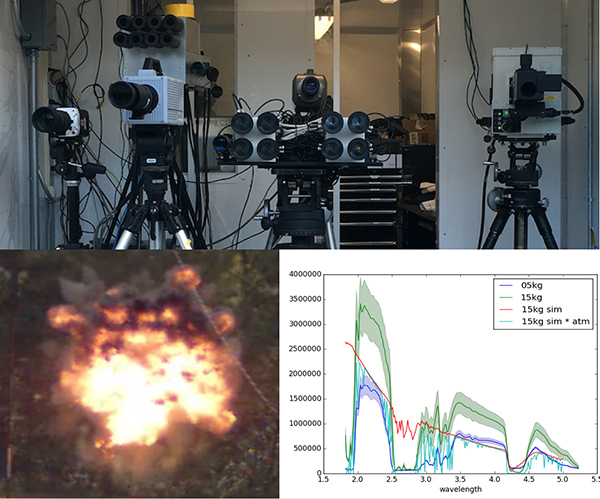
Field-deployed instruments including high-speed cameras, radiometers, and spectrometers allow researchers to validate and advance the understanding of explosive device physics.
The Advanced Remote Sensing Optical Field Deployment Team deployed to six high-explosive test series that represent a varied cross section of explosive and weapon phenomenology. Such rich test article variety and data resources enable research into fundamental physical processes like detonation and combustion, as well as materials science and chemistry in extreme environments. Optical data is used to develop and validate simulation tools from device, coupled shock physics, fluid dynamics, chemical reactions and combustion, and optical radiation transport phases. (5700, 5400, 2500)
Dan Wahl, a DMTS, along with Dave Yocky, Charles Jakowatz, and Senior Scientist Katherine Simonson have developed a processing algorithm to improve the performance of coherent change detection (CCD) synthetic aperture radar. Their improved algorithm has been implemented by DoD. In addition, their technical paper, “A New Maximum-Likelihood Change Estimator for Two-Pass SAR Coherent Change Detection,” was published in the IEEE Transactions of Geoscience and Remote Sensing in Volume No. 54 in April 2016. (5900, 5400)
An advanced satellite ground system comprising command and control and data processing for a set of advanced space-based sensors has been under development since FY13. This system, known as “Recap,” is built on a modern software architecture and includes ~3.3 million source lines of code, modern operator interfaces, and will support national security needs. In September 2016, the project completed a 19-day customer-witnessed acceptance test of functional requirements. In November, the 27 racks and 36 pallets of hardware comprising the ground station were transported to the operational site. (2600,5500, 9300, 9500, 10600)